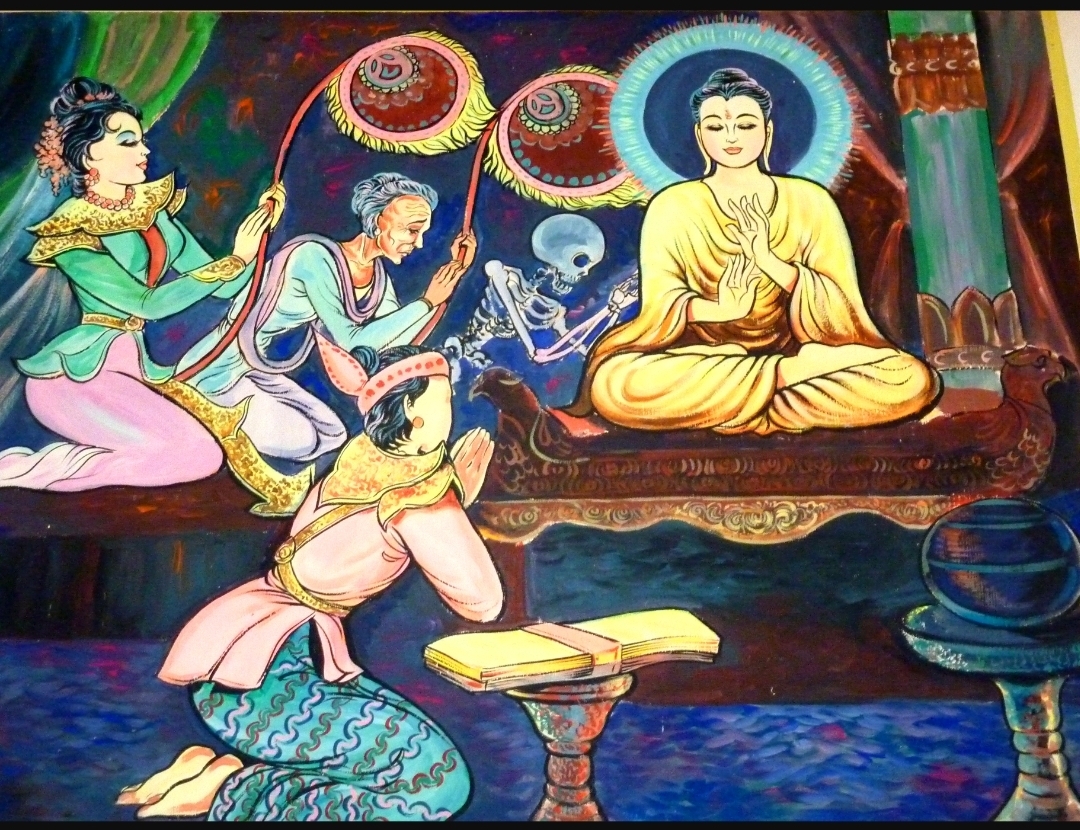Brahmanvagga and Vajrasuci Upanishad: Coincidental Parallels? (Part Two)
शमो दमस्तप: शौचं क्षान्तिरार्जवमेव च |
ज्ञानं विज्ञानमास्तिक्यं ब्रह्मकर्म स्वभावजम् || 42||
Tranquillity, restraint, austerity, purity, patience, integrity, knowledge, wisdom, and belief in the hereafter—these are the intrinsic qualities of work for Brahmins.
―Bhagavat Geeta, 18:42
(Swami Mukundananda)
There is some controversy regarding the meaning of the term astikyam―authors translate it as "belief", "religiousness" or "acceptance of the authority of the Vedas".
Regardless of the true meaning of the term astika, this verse makes it crystal-clear that legitimate Brahminmood lay in conduct and conduct alone; even if one was a manual scavenger, if one practised austerities, exhibited peacefulness and restraint, purified one's mind―one would attain the state of the Brahmin.
The Geeta rejects the belief that the priestly class were the superior caste owing to their noble birth origins and the knowledge of the Vedas―for Krishna, your scrupulous conduct is what suffices for Brahminhood.
(It is worth noting here that believing in the authority of the Vedas doesn't necessarily translate to a belief in Isvara/Personal God)
Vajrasuci, akin to the Bhagavad Geeta, does not consider the knowledge of the Vedas or of performing rituals a precondition for attaining Brahminhood. To the authors of this Upanishad, these are the attributes of a worldly priest, not a dispassionate Brahmin.
The Upanishad boldly asserts, in its ultimate paragraph, that "he who has realized his Ātman (soul, inner self)" is a Brahmin.
The text then attempts to describe what this "realization" might resemble–understanding that we are not our physical bodies, appreciating that the soul is indivisible and incorporeal (and hence devoid of distinctions of class and creed), and coming to terms with the reality that the very same soul that resides in our evanescent bodies pervades the totality of existence.
Having established that the awareness of one's indestructible soul is the sine qua non of Brahminhood, the Vajrasuchi lays down other attributes of a true Brahmin, the tone implying that these are but necessary consequences of the epiphany described above:-
- Absence of kāma (sexual desire/promiscuity) and rāgadvesha (anger and malice)
- Endowed with shama-dama (self-restraint)
- Freedom from the shadripu ("six enemies")―matsarya (stinginess), moha (attachment), trishna (literally: thirst), mada (arrogance), krodha (fury) and lobha (greed).
These attributes dangerously mirror what the Realized One proclaims in the first verse of the Brahmanvagga:
chinda sotaṃ parakkamma, kāme panuda brāhmaṇa.saṅkhārānaṃ khayaṃ ñatvā, akataññūsi brāhmaṇa.
Exert yourself, O holy man! Cut off the stream (of craving), and discard sense desires. Knowing the destruction of all the conditioned things, become, O holy man, the knower of the Uncreated (Nibbana)!
(Of particular interest here is the fundamental difference between the Vedantic and the Buddhist worldview when it comes to what constitutes avidya―ignorance. While the former associates ignorance with identifying with one's ephemeral material body, the latter considers, amongst other things, clinging to the notion of a permanent self a symptom of delusion.)
Time and again, the Buddha has underscored the primacy of principled conduct in defining brahminhood. In Dhammapada 386 and 391, freedom from "cankers", meditativeness, constraint in speech, deed and thought―collectively explicate what a true "holy man" is.
What do you mean by cankers?
Quoting Wikipedia:
Āsava is a Pali term (Sanskrit: Āsrava) that is used in Buddhist scripture, philosophy, and psychology, meaning "influx, canker." It refers to the mental defilements of sensual pleasures, craving for existence, and ignorance, which perpetuate samsara, the beginningless cycle of rebirth, dukkha, and dying again.
The Buddhist Publication Society defines canker as "malignant defilement of the mind that arrests its spiritual progress towards complete liberation."
(Further reading: https://www.bps.lk/olib/bl/bl035_Perera_The-Four-Cankers-(Asavas).html )
All in all, one cannot dismiss the similarities between these texts. Perhaps Buddhism had a profound effect on post-Vedic sociological thought. Who knows?

Comments
Post a Comment